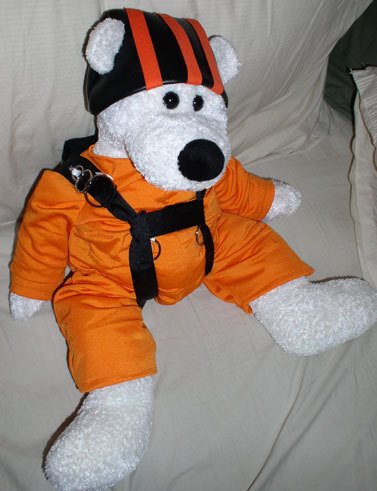Recommended Posts
Just to add one more point to my last post: Okay, so I accept the criticism of the "cutaway" Cypres. It would create more problems than solve. I do want to stress, however, that I never intended to suggest that such a device should serve as a replacement for pulling one's own handles. It was simply meant as an improvement to the existing Cypres, but with the same basic purpose: To save a jumper's life at the last possible moment, if he/she either won't or can't save themselves.
riggerrob 644
Quote>by misfiring at 50 feet (which current AAD's do with some regularity)
Bill, could you expound on this statement?
>>>>>>>>>>>>>>>>>>>>>>>>>>>>>>>>>>>>
The top one percent of pond swooping competitors go fast enough to scare Cypres at 50 feet.
riggerrob 644
It is amusing how the POPULAR definition of "mis-fire" has changed since the introduction of electronic AADs.
Back in the old days, students complained about FXCs "mis-firing at 3,000 while I was reaching for my ripcord!"
In the first place, you were well below 3,000'.
In the second place, how is a mechanical gadget supposed to know where your hand is?
In the third place, what is a junior jumper still doing in freefall below 3,000?
Nowadays, jumpers complain that "My Cypres mis-fired at a thousand feet while my main snivelled!"
Why is ANY jumper still going fast at one thousand feet?
I just find it amusing how definitions change over the years.
Back in the old days, students complained about FXCs "mis-firing at 3,000 while I was reaching for my ripcord!"
In the first place, you were well below 3,000'.
In the second place, how is a mechanical gadget supposed to know where your hand is?
In the third place, what is a junior jumper still doing in freefall below 3,000?
Nowadays, jumpers complain that "My Cypres mis-fired at a thousand feet while my main snivelled!"
Why is ANY jumper still going fast at one thousand feet?
I just find it amusing how definitions change over the years.
QuoteQuote>by misfiring at 50 feet (which current AAD's do with some regularity)
Bill, could you expound on this statement?
>>>>>>>>>>>>>>>>>>>>>>>>>>>>>>>>>>>>
The top one percent of pond swooping competitors go fast enough to scare Cypres at 50 feet.
I would think if they were going fast enough to scare the Cypres at 50 they are already dead. The Cypres reads vertical not horizontal and stops reading at 130 feet.
Sparky
My idea of a fair fight is clubbing baby seals
billvon 3,173
>The top one percent of pond swooping competitors go fast enough
>to scare Cypres at 50 feet.
Well, that's closer to 150 feet. I was thinking more along the lines of misfires that occur due to EMI. I saw one such fire at World Team two years ago, when a jumper landed near an airport radar. It would be bad if the cypres had cut away the jumper's canopy at that point.
>to scare Cypres at 50 feet.
Well, that's closer to 150 feet. I was thinking more along the lines of misfires that occur due to EMI. I saw one such fire at World Team two years ago, when a jumper landed near an airport radar. It would be bad if the cypres had cut away the jumper's canopy at that point.



.thumb.jpg.4bb795e2eaf21b8b300039a5e1ec7f92.jpg)
Share this post
Link to post
Share on other sites